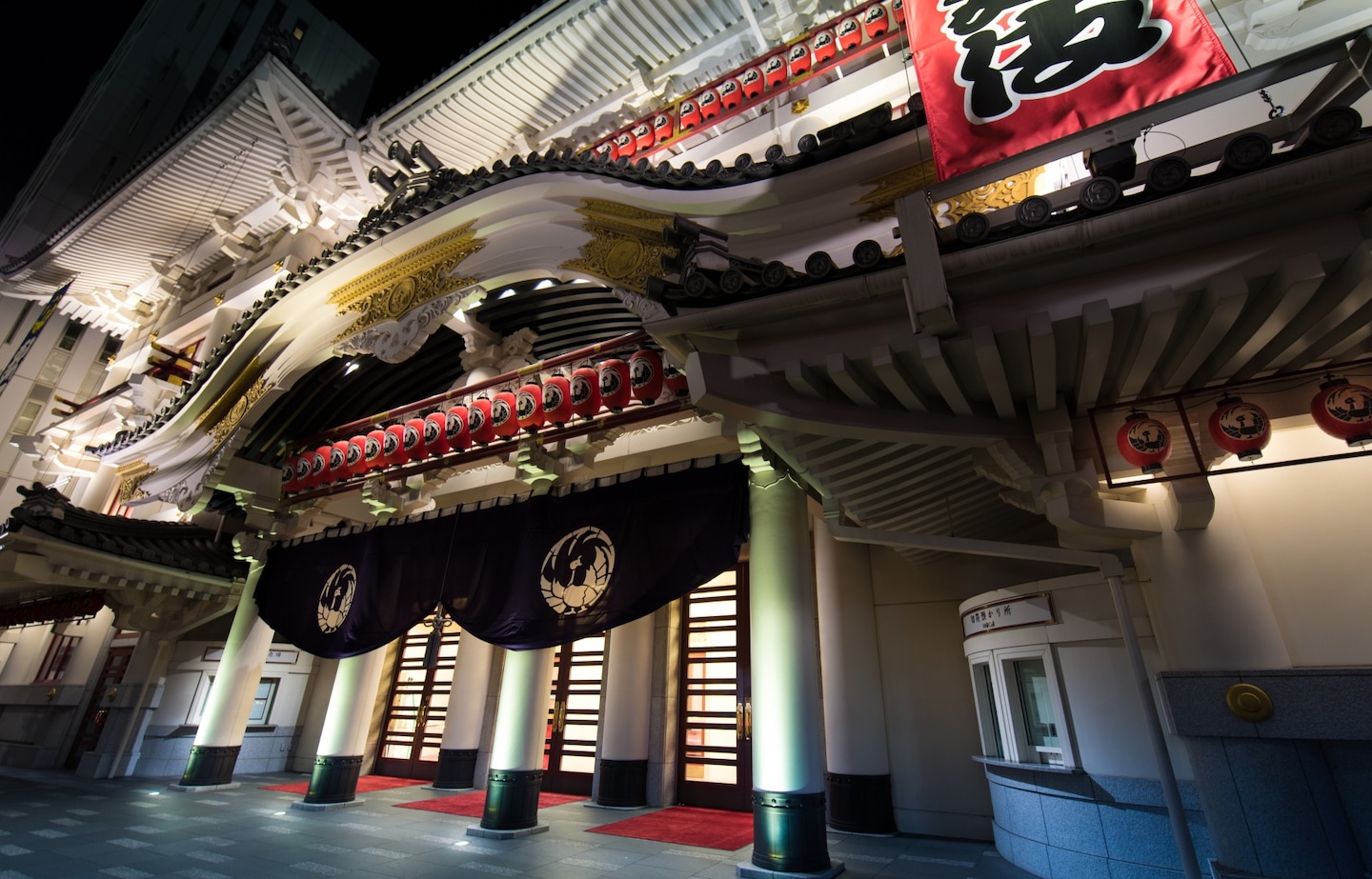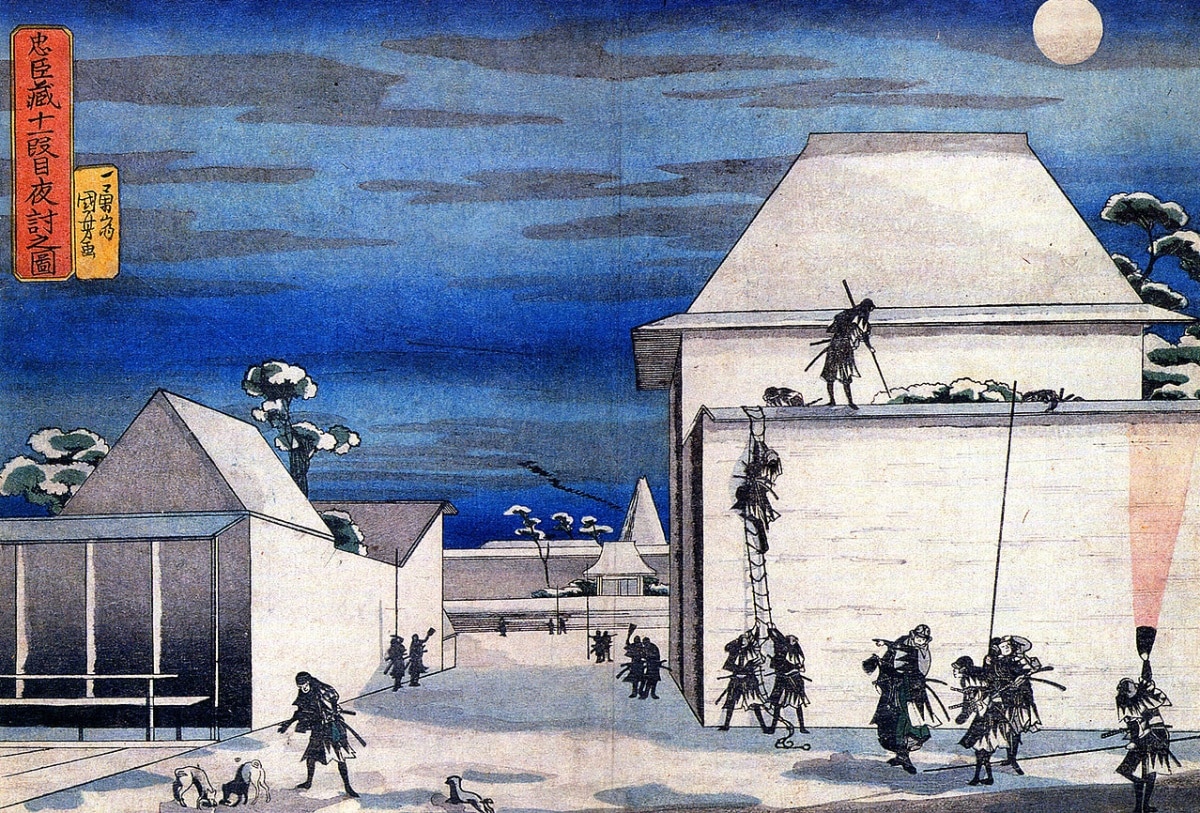5 Fundamental Kabuki Plays

Kabuki has a long and complex history, but that doesn't mean you should have any reservations about seeing it! While kabuki plays may be difficult to rank, as the popularity of shows and the frequency of performances change over time, below we've listed five key plays in the rough likelihood you'll be able to see them throughout Japan.
By Wendell T. Harrison5. Yoshitsune Senbon Zakura (義経千本桜)
https://www.youtube.com/watch?v=BU66syDUuJ8
Yoshitsune Senbon Zakura, or Yoshitsune and the Thousand Cherry Trees, began as puppet theater, but was adapted to kabuki a year later in 1748. Often simply called Yoshitsune, the play is based on the epic work Heike Monogatari, and focuses on the years immediately after the fall of the mighty Taira Clan at the hands of Minamoto no Yoshitsune. It's generally held to be one of the three most popular kabuki works.
Famed general Yoshitsune is being pursued by agents of his brother, the newly self-appointed shogun Minamoto no Yoritomo. Yoshitsune is warned that he should make the first strike against his brother, and is given a symbolic drum to strike when the time is right. However, his mistress Shizuka is deemed a burden to the group's flight, and when she refuses to be left behind, she's tied to a tree along with the drum. Yoritomo's men find her, but before she's taken back to the shogun, Yoshitsune's retainer Sato Tadanobu dramatically saves her in a very elaborate fight.
In kabuki, fighting is represented by a form of dance, and in the video above you can see one performance of this long-standing work. Later, Tadanobu reveals he's actually a fox spirit in an amazing and famous transformation scene.
The full version of Yoshitsune consists of five scenes divided into 15 acts, and while it was originally designed to take the better part of a day to perform, the modern styling of the full production would take twice as long. In fact, given that most kabuki plays were written to this length, you'll seldom see a full play in modern times. Instead, most performances will only show the most famous scenes from a number of different plays throughout an afternoon.
And if you're interested in seeing more of Sato Tadanobu, a famed samurai in his own right, his story will be featured as Kabukiza's matinee performance in September 2016. Click the link below for more info on the full September program.
4. Kanadehon Chushingura (仮名手本忠臣蔵)

https://en.wikipedia.org/wiki/Ch%C5%ABshingura
Another of the three kabuki greats, Kanadehon Chushingura (The Treasury of Loyal Retainers), simply known as Chushingura, is an 11-act kabuki play that began as a bunraku puppet theater production, though both were introduced in rapid succession in 1748.
Chushingura is based on the popular tale of 47 ronin (masterless samurai) who seek revenge for the murder of their master and then all commit suicide at the same time as punishment for their crime. While the real events occurred in 1703, in order to be performed as entertainment, they were set in the Muromachi Period (1333–1568) and names were changed—although they were still similar to their real source.
The full title literally means "Kana Practice Book Treasury of the Loyal Retainers," so named because the number of ronin matches the number of kana characters in the Japanese syllabary. In the play, each ronin is prominently identified with a different kana.
This extremely lengthy play, estimated to take at least eight hours to perform in full, has several interesting features for a live performance. For example, the play begins with actors slumped over lifelessly before being introduced. Another scene, in which a character commits suicide, is called a tosanba ("do not enter or leave") scene: Because of the dramatic nature, the audience was not allowed to enter or exit until the scene was over.
3. Benten Kozo (弁天小僧)
https://www.youtube.com/watch?v=6EEsPj_htQo
A wildly popular kabuki play in the traditional five acts, Benten Kozo is colloquially named after its thief protagonist. However, it's also popularly known as Shiranami Gonin Otoko (Five Men of the White Waves, where "men of white waves" was an old term for thieves), while its formal name is Aoto Zoshi Hana no Nishiki-e (The Story of Aoto and the Gorgeous Woodblock Print).
Benten Kozo himself begins the play by swindling a young princess, making her believe he's her bethrothed. After a series of scams involving four other thieves, the five of them finally team up at the climax of the play. More trickery is revealed as two of the thieves are really police informants and Kozo's suicide, in order to set things right, is considered one of the most famous in kabuki, as it incorporates a very elaborate stage trick involving the roof he's standing on at the time.
The scene in the video above is arguably the most famous, as each thief in turn introduces himself, followed by a signature pose called a mie. Mie were incredibly dramatic gestures using the full body and head to create a picture on the stage: The more elevated the actor, the more elaborate the mie. The scene above ends with the police setting upon the five thieves.
2. Sugawara Denju Tenarai Kagami (菅原伝授手習鑑)
https://www.youtube.com/watch?v=db4cDWFoXqk
Another of the three great kabuki plays, this is a five-act drama that's generally known for one particular section. Act Four, Scene Three is commonly called "Terakoya" ("Temple School"), and is the most performed part of the entire work.
The story revolves around Kan Shojo, a government official who's exiled to Kyushu under a false charge of conspiring to depose the emperor. The man who accused him (and truly has designs on the throne), Fujiwara no Shihei, chases him to Kyushu to finish the job. But one of Shihei's retainers, Matsuomaru, is forced into conflict with his brothers, who support Shojo as their father did. When Matsuomaru is finally ordered to identify and murder Shojo's son in a calligraphy school, he swaps out his own son for Shojo's, an act that is now considered emblematic of the theme of obligation versus compassion.
Most notable is the moment when the child is beheaded with a loud strike offstage and Matsuomaru adopts the famed Matsuo mie, attempting to stifle his emotional distress. You don't need to understand ancient Japanese to be touched by this heartbreaking sacrifice, or be saddened when the head of the child (as seen in the video above) is revealed onstage.
1. Yotsuya Kaidan (四谷怪談)

https://art.famsf.org/utagawa-kunisada/actors-kataoka-gado-ii-and-bando-hikosaburo-iv-tamiya-iemon-and-ghosts-oiwa-and
Tamiya Iemon wants an excuse to divorce his wife, Oiwa. Meanwhile, Oume, another woman, is in love with Iemon. Believing that she can never compete with Oiwa's beauty, Oume sends her a topical poison disguised as facial cream. Oiwa is horribly disfigured as soon as she uses it, portrayed in a spectacular scene where her hair falls out as she combs it before her mirror. Disgusted, Iemon hires a brothel owner to rape his wife and establish grounds for a divorce, but Oiwa accidentally kills herself during the altercation, cursing Iemon with her dying breath. Iemon marries Oume soon thereafter, but Oiwa, now a vengeful spirit, tricks him into murdering his new bride. As Oiwa's haunting grows more and more intense, he eventually goes insane.
Yotsuya Kaidan, first staged in July 1825 as a double-feature with Kanadehon Chushingura (No. 4 above), is the most-adapted Japanese ghost story, and a huge influence on horror stories to this day. Though there are several different adaptations, the basic story remains the same. If the plot sounds familiar, chances are you've seen Ju-On (The Grudge), or one of the many other stories based around Yotsuya Kaidan. Even Sadako, the evil spirit from Ringu (The Ring) is visually inspired by Oiwa's ghost, noted by her lank hair and drooping left eye.



